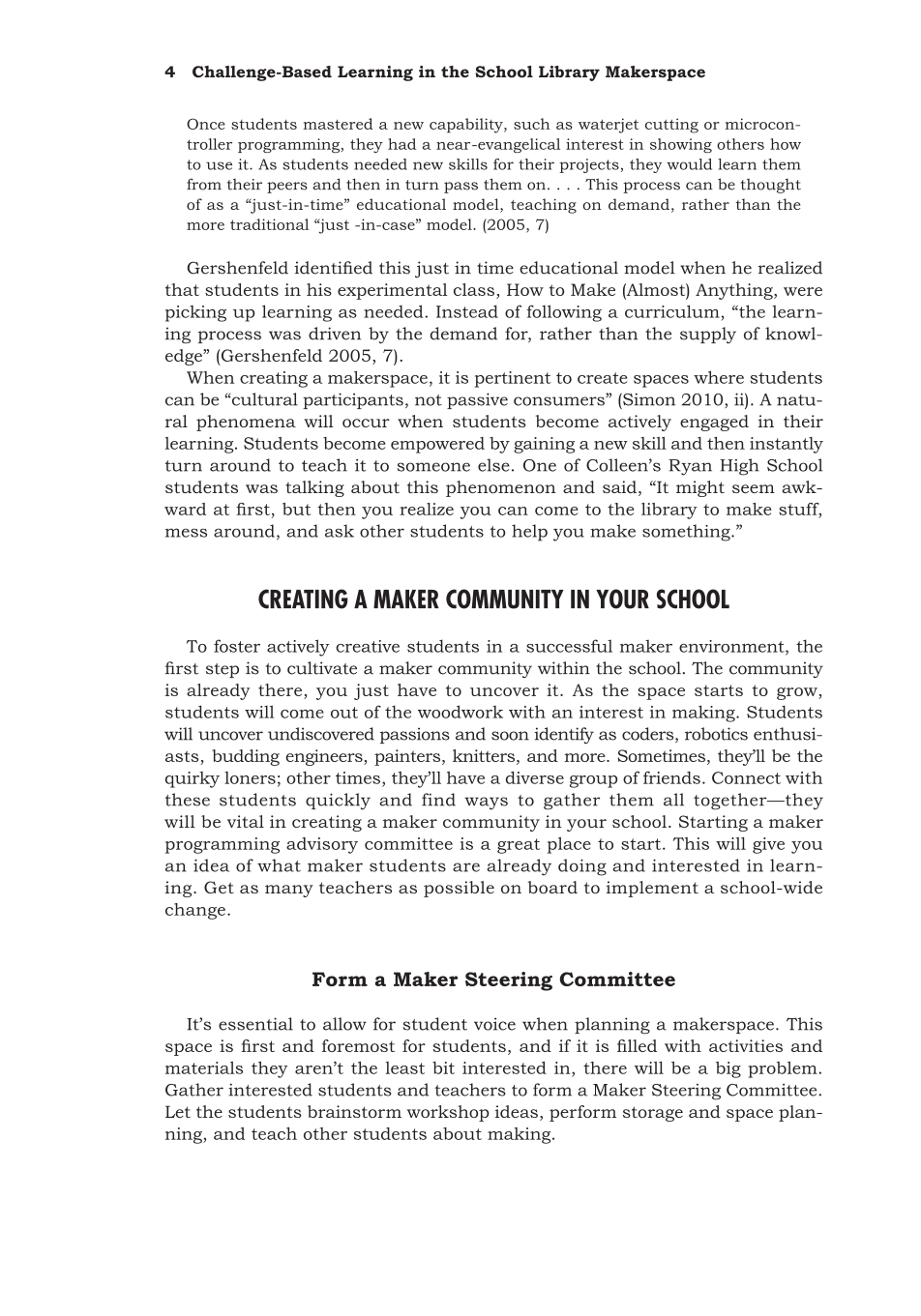4 Challenge-Based Learning in the School Library Makerspace
Once students mastered a new capability, such as waterjet cutting or microcon-
troller programming, they had a near-evangelical interest in showing others how
to use it. As students needed new skills for their projects, they would learn them
from their peers and then in turn pass them on. . . . This process can be thought
of as a “just-in-time” educational model, teaching on demand, rather than the
more traditional “just -in-case” model. (2005, 7)
Gershenfeld identified this just in time educational model when he realized
that students in his experimental class, How to Make (Almost) Anything, were
picking up learning as needed. Instead of following a curriculum, “the learn-
ing process was driven by the demand for, rather than the supply of knowl-
edge” (Gershenfeld 2005, 7).
When creating a makerspace, it is pertinent to create spaces where students
can be “cultural participants, not passive consumers” (Simon 2010, ii). A natu
ral phenomena will occur when students become actively engaged in their
learning. Students become empowered by gaining a new skill and then instantly
turn around to teach it to someone else. One of Colleen’s Ryan High School
students was talking about this phenomenon and said, “It might seem awk-
ward at first, but then you realize you can come to the library to make stuff,
mess around, and ask other students to help you make something.”
CREATING A MAKER COMMUNITY IN YOUR SCHOOL
To foster actively creative students in a successful maker environment, the
first step is to cultivate a maker community within the school. The community
is already there, you just have to uncover it. As the space starts to grow,
students will come out of the woodwork with an interest in making. Students
will uncover undiscovered passions and soon identify as coders, robotics enthusi-
asts, budding engineers, painters, knitters, and more. Sometimes, they’ll be the
loners; other times, they’ll have a diverse group of friends. Connect with quirky
students quickly and find ways to gather them all together—they these
will be vital in creating a maker community in your school. Starting a maker
programming advisory committee is a great place to start. This will give you
an idea of what maker students are already doing and interested in learn-
ing. Get as many teachers as possible on board to implement a school-wide
change.
Form a Maker Steering Committee
It’s essential to allow for student voice when planning a makerspace. This
space is first and foremost for students, and if it is filled with activities and
materials they aren’t the least bit interested in, there will be a big problem.
Gather interested students and teachers to form a Maker Steering Committee.
Let the students brainstorm workshop ideas, perform storage and space plan-
ning, and teach other students about making.

















































































































































